Japan isn’t just temples and cherry blossoms—it’s a wild wonderland crawling, flying, and glowing with life you won’t see anywhere else. From snow monkeys soaking in hot springs to squid that light up the ocean like fireworks, the country is full of animals that seem almost too magical to be real. And just when you think you’ve seen it all, Japan hides a few secrets—creatures so rare and elusive, even scientists barely catch a glimpse. Let’s explore 10 animals you might actually spot on your next visit—and 4 that remain wrapped in mystery, tucked deep within forests, islands, and twilight.
Japanese Macaque
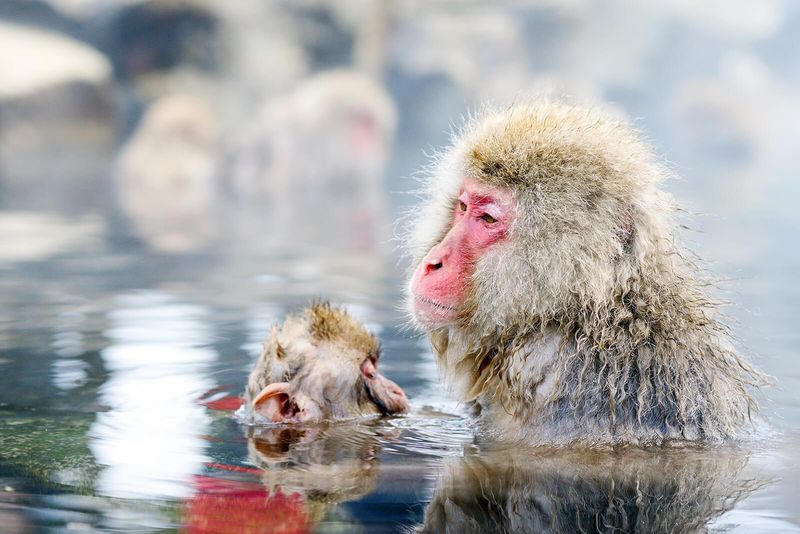
In the heart of Honshu’s chilly winters, the Japanese Macaque, or snow monkey, finds warmth and solace in the natural hot springs. These intelligent primates are famous for their unique behavior of soaking in thermal baths. With their expressive faces and thick fur, they have adapted remarkably well to the cold climates.
Visitors can often see them lounging around in Jigokudani Monkey Park, where they share a curious camaraderie with each other and occasionally with human onlookers. Did you know? These monkeys have learned to roll snowballs just for fun!
Red-Crowned Crane
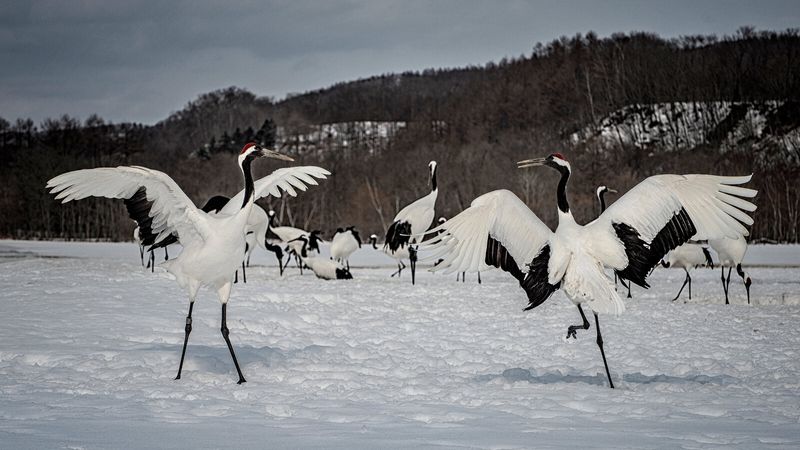
Amidst Hokkaido’s expansive wetlands, the Red-Crowned Crane stands as a symbol of grace and longevity. Their striking red crown and snowy plumage make them a favorite among birdwatchers. These cranes are known for their elaborate mating dances, which involve synchronized steps and calls.
Despite their beauty, they are endangered, with efforts ongoing to protect their habitats. Witnessing their courtship display is a moment of sheer poetry. Fun fact: The Red-Crowned Crane is a revered creature in Japanese culture, often representing happiness and eternal youth.
Steller’s Sea Eagle

The Steller’s Sea Eagle, one of the largest eagles in the world, graces the skies of Hokkaido during the winter months. Known for its immense wingspan and powerful build, this raptor is often seen soaring over the rugged landscapes of the Nemuro Peninsula.
Bird enthusiasts flock to see these eagles, drawn by their impressive hunting skills and regal presence. Surprisingly, these birds are not afraid of harsh weather, thriving in icy conditions. Fun tidbit: Their distinctive yellow beak can be spotted from miles away!
Japanese Giant Salamander

Hidden beneath the clear streams of Japan’s mountains lies the prehistoric Japanese Giant Salamander. Stretching up to 1.5 meters, this amphibian is considered a living fossil, having remained unchanged for millions of years.
Their nocturnal habits make them elusive, yet their importance in freshwater ecosystems is profound. Despite their size, they are masters of camouflage, blending seamlessly with rocky beds. Fun fact: These salamanders breathe through their skin, an adaptation that suits their aquatic life perfectly!
Japanese Serow
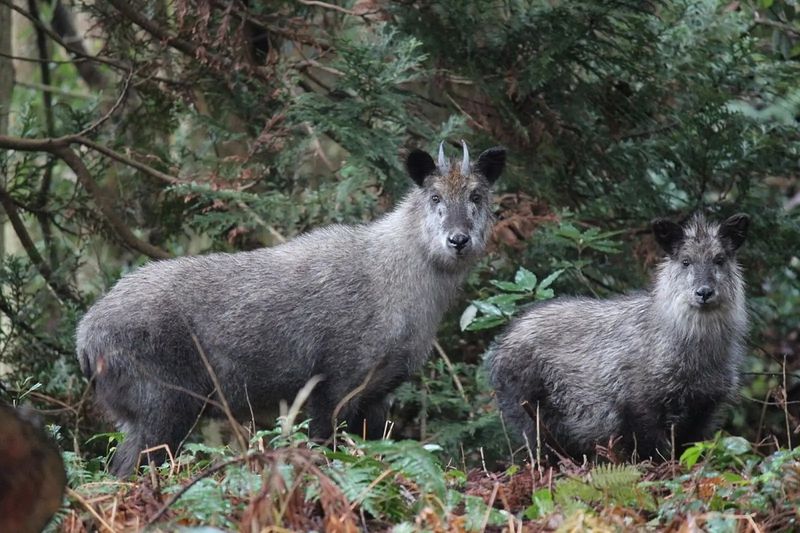
The Japanese Serow, with its goat-like appearance, is a symbol of the wild, forested landscapes of Japan. Preferring solitary lives, these creatures wander the mountainous regions, munching on leaves and plants.
Their keen sense of hearing and sight keeps them alert to potential threats. Despite their reclusive nature, they play a crucial role in Japan’s biodiversity. Interesting note: The Japanese Serow is a national symbol, protected by law and loved for its uniqueness.
Tanuki (Japanese raccoon dog)
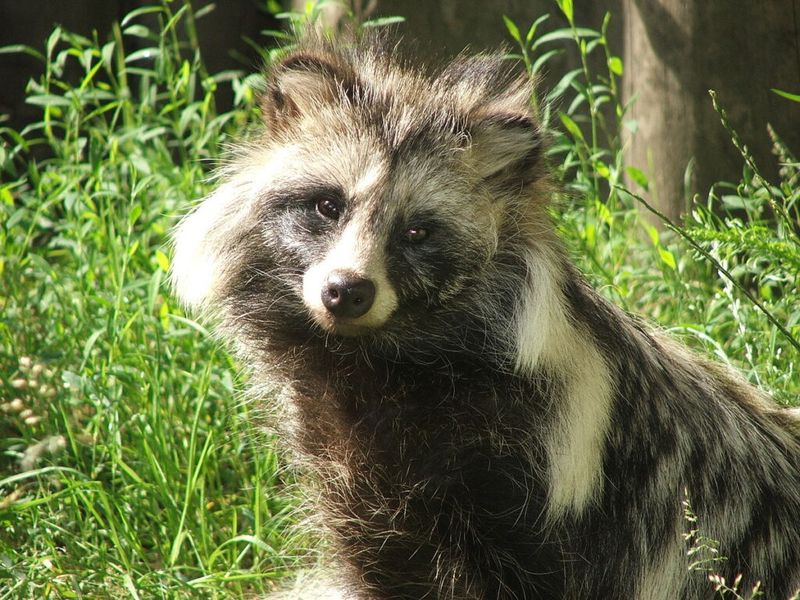
The Tanuki, or Japanese raccoon dog, is a creature deeply embedded in Japanese folklore. Known for its mischievous nature and adaptability, the Tanuki thrives in both rural and urban settings.
Its distinctive mask-like face and bushy tail make it easily recognizable. Often portrayed as shape-shifters in stories, these animals evoke a sense of whimsy and mystery. Unlike other canids, Tanukis do not bark but communicate through a series of whines and growls.
Fun fact: In folklore, Tanukis are often depicted with oversized bellies, symbolizing prosperity.
Shima-Enaga (Hokkaido long-tailed tit)
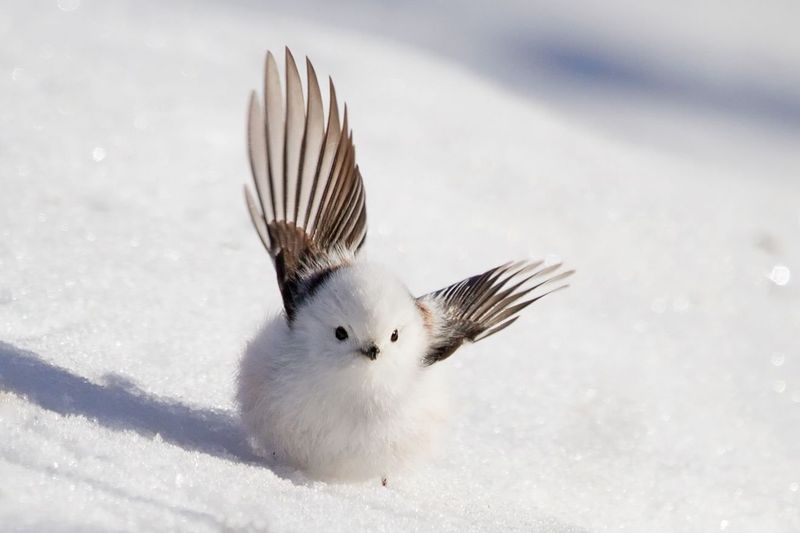
With its charming appearance, the Shima-Enaga, or Hokkaido long-tailed tit, captivates the hearts of those lucky enough to spot it. These small birds, with their all-white faces and fluffy bodies, are a winter delight in Hokkaido’s snowy woods.
Their cheerful calls and acrobatic flitting between branches bring life to the stark winter environment.
Despite their delicate appearance, they are resilient, enduring harsh weather with ease. Fun tidbit: Their nests are intricately woven with spider silk and feathers, showcasing their remarkable craftsmanship.
Hokkaido Red Fox
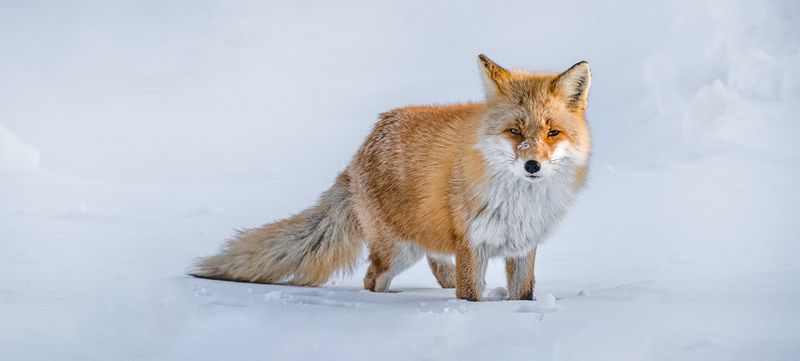
In the northern forests of Hokkaido, the Red Fox is a familiar and endearing sight. These foxes are active during the day, their vibrant fur contrasting beautifully with the green and white of their woodland home.
Known for their playful behavior and sharp intellect, they often engage in elaborate hunts or simple play.
Yet, their adaptability ensures they thrive, even in challenging environments. Fun fact: The Hokkaido Red Fox is a subspecies distinct from its mainland relatives, adapted to the colder climates of the north.
Firefly Squid
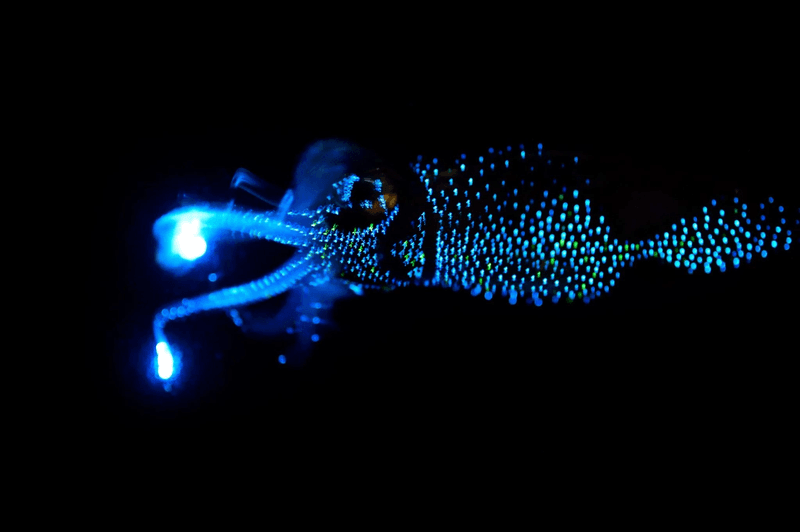
Along Japan’s coasts, the Firefly Squid creates a mesmerizing spectacle each spring. As night falls, these tiny creatures emit a brilliant blue light, turning the shoreline into a magical display.
Their bioluminescence is used to communicate and attract mates, a vital part of their life cycle. Tourists flock to Toyama Bay for this breathtaking phenomenon, capturing photos of the glowing waters.
Interesting bit: Each Firefly Squid has photophores on its body, allowing it to control the intensity and pattern of its glow.
Japanese Giant Spider Crab
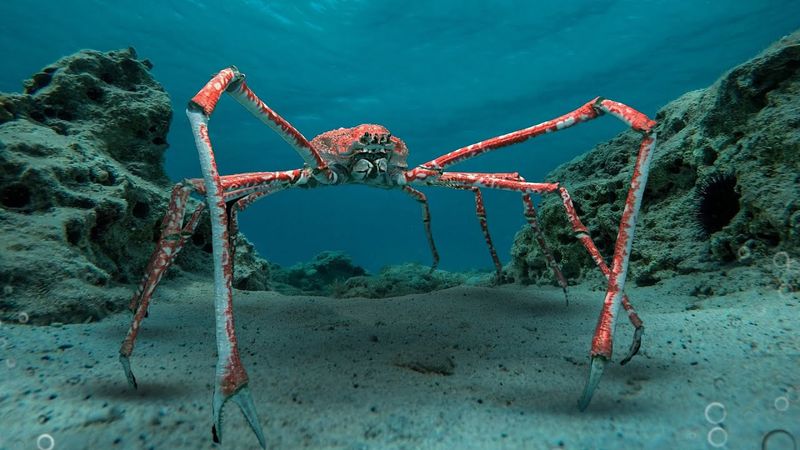
Beneath Japan’s coastal waters lurks the Japanese Giant Spider Crab, renowned as the world’s largest arthropod. With legs spanning up to 4 meters, these creatures are a sight to behold. They inhabit deep ocean floors, scuttling over rocky terrain with ease.
Despite their intimidating appearance, they are gentle giants, scavenging for food among the seabed’s detritus.
Fun fact: During mating season, these crabs travel great distances to find the perfect partner, showcasing their surprisingly romantic side.
Iriomote Cat
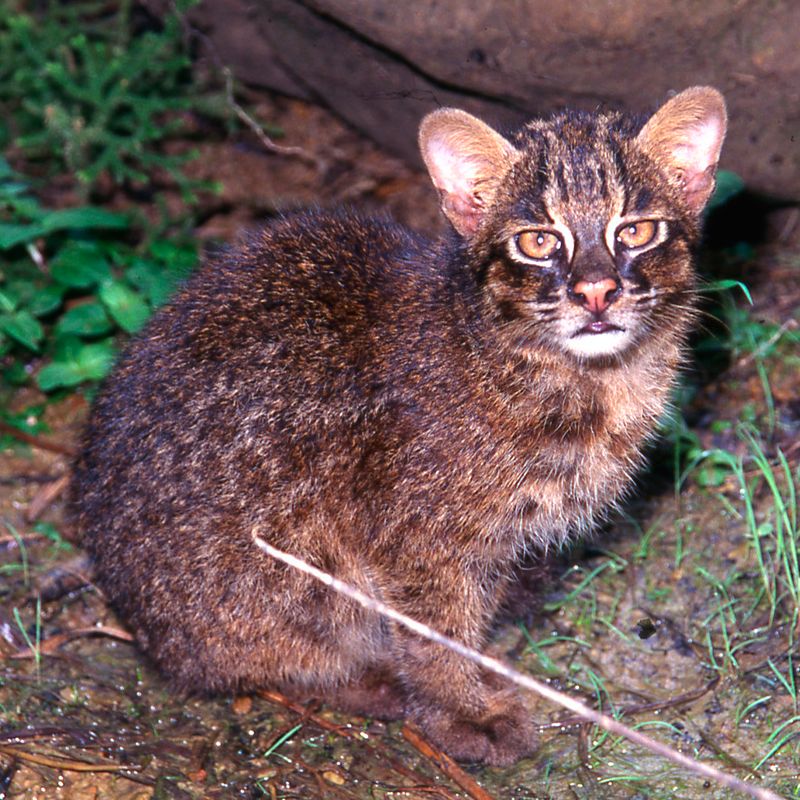
With fewer than 100 individuals remaining, the Iriomote Cat is one of Japan’s most elusive creatures. Found only on Iriomote Island, this critically endangered wildcat navigates the dense jungles with stealth and precision.
Their nocturnal nature and dwindling population make sightings incredibly rare, a privilege for the fortunate few. Conservation efforts are ongoing to protect their fragile habitat from human encroachment. Did you know? The Iriomote Cat is considered a living treasure, embodying the island’s natural beauty and diversity.
Amami Rabbit
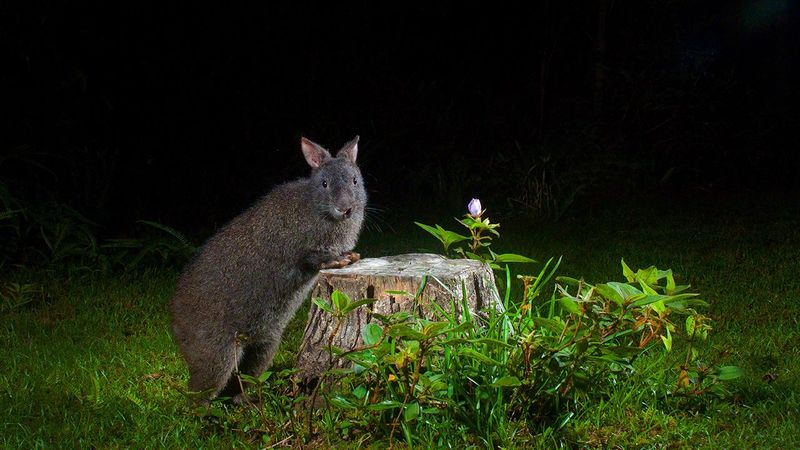
Endemic to the Amami Islands, the Amami Rabbit is a nocturnal marvel often dubbed a ‘living fossil.’ With its short ears and primitive features, this rabbit is unlike any other in the world.
Their habits of foraging at night among forest floors make them hard to spot. Conservationists work tirelessly to preserve their habitat, battling threats from invasive species. Interesting fact: These rabbits have unique vocalizations, communicating through a series of clicks and grunts.
Okinawa Rail
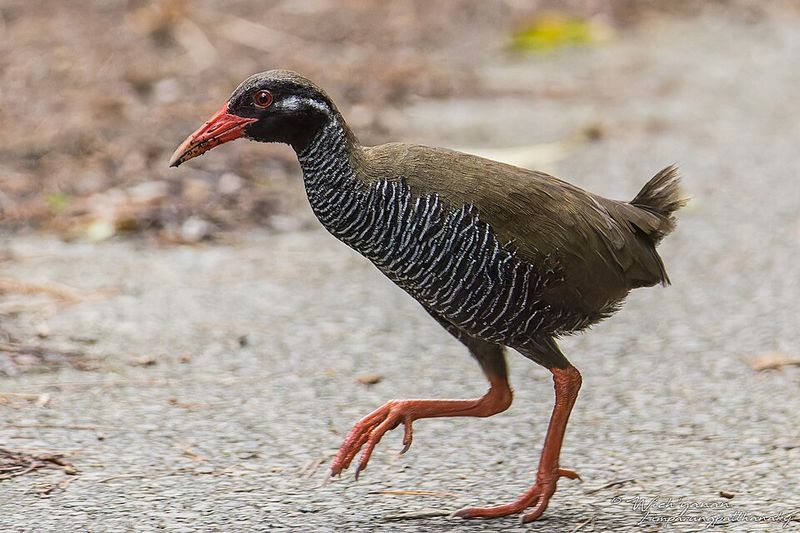
The Okinawa Rail is a flightless bird endemic to the Yanbaru region of Okinawa. Known for its elusive nature, this shy bird is rarely seen but often heard, with its distinctive calls echoing through the forests.
Conservation efforts are crucial as their habitat faces deforestation. Birdwatchers consider spotting one a significant achievement. Did you know? The Okinawa Rail’s bright red legs are a vibrant contrast to its otherwise dark plumage, adding to its mysterious allure.
Japanese Pika
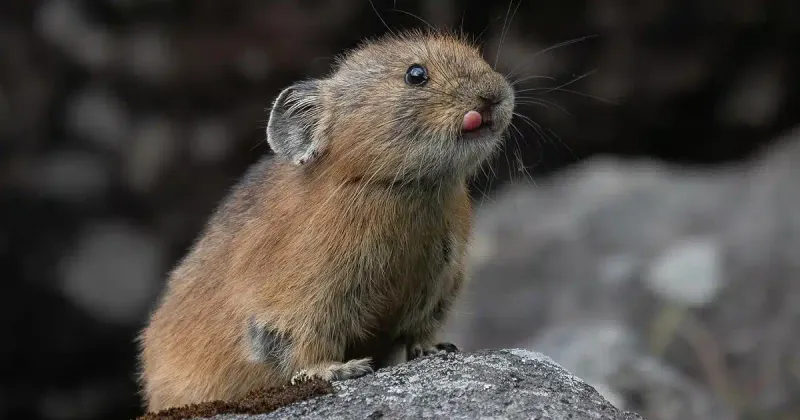
In the alpine regions of Hokkaido, the Japanese Pika makes its home. These small, herbivorous mammals are known for their distinctive calls and penchant for hoarding food.
Living among rocky slopes, they are adept at blending into their environment, making them a challenge to spot. Their role in the ecosystem is vital, as they help maintain the balance of plant life. Fun fact: Japanese Pikas do not hibernate, instead relying on stored food to survive through the harsh winters.

